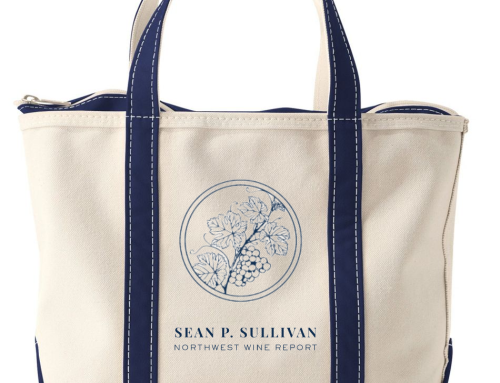All wines reviewed are rated as follows:
|
Rating System as of 2012
|
Definition
|
Rating System Prior to 2012
|
Rough Equivalence in a 100 Point System
|
|
An exceptional wine. Buy it now and either tell all your friends about it or keep it very, very secret, depending on your personality and availability.
|
**
|
92-100
|
|
An excellent wine. Convince a friend to buy some and share it with you.
|
*
|
90-92
|
|
|
A good wine. Worth drinking. If it represents a particular value I will list it as Recommended.
|
+
|
86-89
|
|
|
A decent wine. Drink it if you must.
|
.
|
80-85
|
|
|
Not recommended or a flawed wine. Refuse this wine if served.
|
–
|
< 79
|
Wines are rated irrespective of price. However, if a wine with a ‘***’ or ‘Good’ rating represents a particular value, I list it as Recommended.
Reviews of all wines received as samples are published regardless of rating. Reviews of purchased samples and wines tasted at wineries may, or may not, be published due to time constraints. Information stating that a sample was received from a winery is provided in the post and included in the Tasting Note Database.
I try generally not to rate wines in half increments (e.g, ** ½ ). Rather, I rate down if a wine sits between two categories (never up). If I feel doing so greatly misrepresents the wine in some way, I will, occasionally, give a half increment rating.
All wine reviews include tasting notes. Additionally, I try as best I can either in the tasting note or post itself to describe a winery’s style so that readers can steer towards it or away from it based on their own preferences.
I try to rate wines as best I can regardless of my personal preferences. Wines are made in a variety of styles, some of which I personally favor and some of which I do not. However, when evaluating a wine, I try to put aside my personal preferences and ask “What is this wine trying to do? Does it do it well?” For varietal wines, I do consider whether the wine is varietally correct.
I taste wines in a variety of settings. While reviewing all wines in the same, controlled environment would be ideal, as an independent writer it would unfortunately greatly limit the number of wines I am able to review.
For this reason, I sample and review wines in both private and public settings. Private settings are controlled environments with respect to temperature, light, stemware, and other variables. Public settings include winery visits and other settings. Of course, if I do not feel I am able to properly evaluate a wine for whatever reason, I do not include a review of the wine regardless of the setting. Information about the setting for each wine is contained in the Tasting Note Database.
Given that I taste wines in both public and private settings and that I am a one-person operation, I rarely review wines under blind conditions. If I were able to taste all of the wines I review under blind conditions, I might consider doing so. Given that I cannot, I do not.
I prefer to sample red wines between 62 and 66 degrees and white wines between 50 and 55 degrees. If there is any variation between these temperatures and the temperature I sample a wine at, I note this in my reviews.
Background on the System
For many years I used a homegrown, non-standard five point system, which is described here. I changed this to a traditional five star system at the beginning of 2012.
Over the years, I have considered moving to the 100-point system, which consumers favor. When I started Washington Wine Report, I did not use a 100-point system because I felt I had no business rating wines in this manner. As I have gained more experience, I have still resisted moving to this system.
I personally have nothing against the 100-point system and have used it in other places, such as Seattle Metropolitan. I do not use it on my blog, principally, because I prefer to provide categories that are broader and have differences that are more readily understandable to the average consumer. Is a wine not recommended, decent, good, excellent, or exceptional?
Of course, any rating system has its pluses and minuses. While at times the system I use does limit me, overall it forces me to make decisions about a wine. I find that it has worked for me. Hopefully you will find the same.
If you have any questions my rating system, please contact me at [email protected].












Nice change.
I agree with your comment about the "100 point scale".
Just how, objectively, do you differentiate between an 89 point wine and a 90 point wine? There can be huge implications for the producer in that one point swing.
I generally assume, less tainting/flaw issues, that a wine that makes it to market is at least a 75 point wine. So in essence the point swing is 25 points between "acceptable" and "freakin' outstanding".
I notice your bands are tighter in the mid-section (good-excellent)which is where I think almost all wines end up (more crowded and less space to differentiate) and I think that is appropriate.